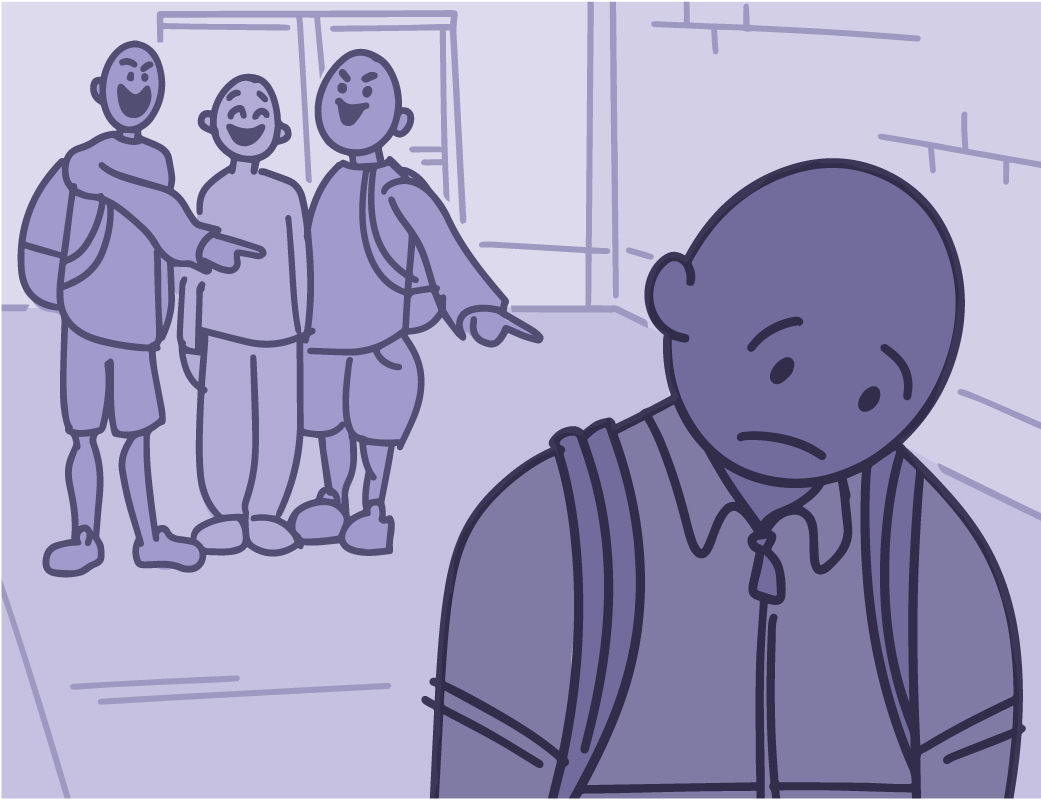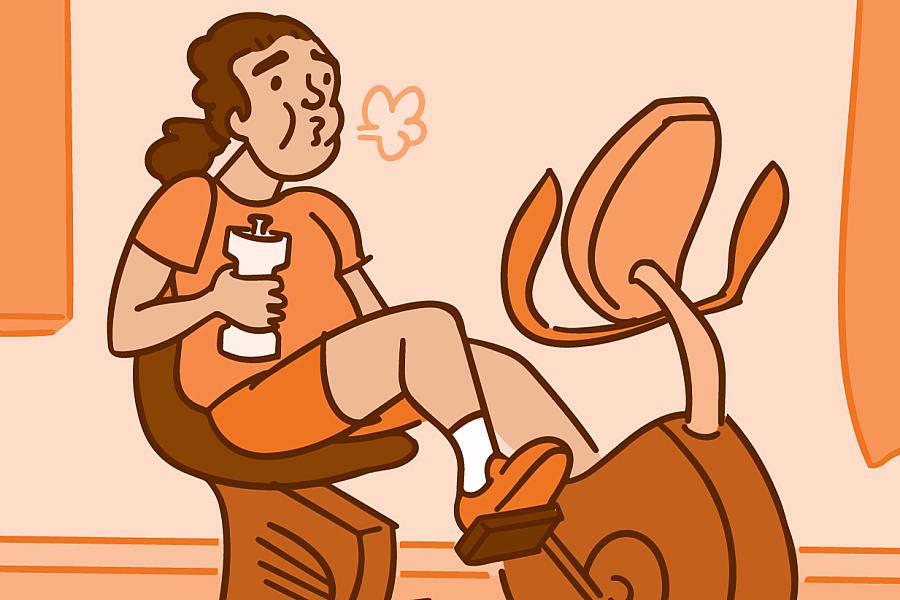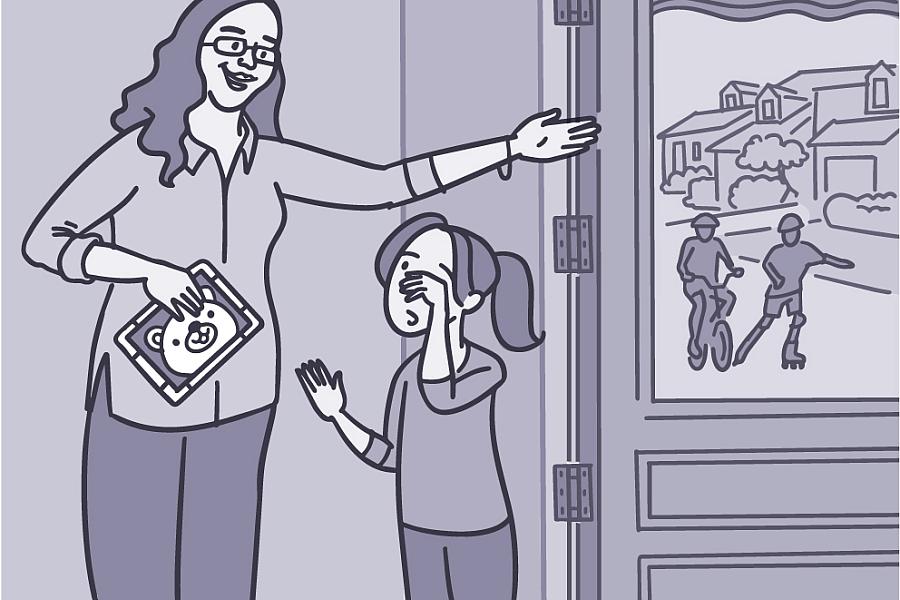Addressing Childhood Bullying
When Peer Aggression Goes Too Far

Most people have felt picked on, put down, or left out by peers at some point in their life. Conflict between children, even friends, can be a normal part of development. But some aggressive behaviors cross the line into bullying.
“Bullying is a type of aggression,” says Dr. Jamie Ostrov, a psychologist who studies child development at the University at Buffalo. “But not all aggression is bullying.”
For behavior to be considered bullying, it must feature two things, Ostrov explains. One is a power imbalance between the child doing the bullying and the child being bullied. That imbalance can stem from differences in physical strength, popularity, or other things.
The second is repetition. That is, the behavior happens more than once or creates the fear that it may keep happening.
Bullying can be physical, like hitting or kicking. It may involve damage to property, like schoolbooks or electronics. It can be verbal, like name calling or teasing. And it can be social, such as spreading rumors or excluding someone from a group. These behaviors can happen in person or online.
Being bullied is a common experience. More than 1 in 4 children in middle school report being bullied in person. And 1 in 5 high school students are bullied every year.
Bullying can have life-long consequences. NIH research is yielding new insights into how to prevent and stop bullying behaviors.
A Cycle of Hurt
Kids who are seen as different from their peers in some way are more likely to be the target of bullying behaviors. Being bullied can cause lasting harm. Kids who experience bullying are at higher risk for mental health conditions, like depression and anxiety, and for dropping out of school.
The reasons why some kids bully others are numerous. Some kids who bully may be dealing with aggression or violence at home. Others may struggle with social skills and have trouble understanding others’ emotions. Some may bully to fit in or gain social status.
Being bullied can sometimes start a cycle of bullying. Kids who are bullied will often go on to bully others. “Victims learn from those experiences and can become the aggressors,” Ostrov explains. This puts them at risk for other problems, too.
Kids who engage in bullying in elementary and middle school are more likely to develop other harmful behaviors as they get older, says Dr. Dorothy Espelage, a psychologist who studies peer aggression at the University of North Carolina.
“They have the greatest odds of engaging in sexual harassment and sexual violence later on,” she explains.
Kids who bully also have an increased risk of mental health conditions and problems in school, adds Ostrov. And those who are both bullied and bully others are at the greatest risk for mental health conditions and school behavior problems.
Stepping In
What can you or your kids do if a child is being bullied? For kids who witness bullying, speaking up in the moment can feel risky, says Dr. Michele Ybarra, a child mental health expert at the Center for Innovative Public Health Research. “Kids don’t want to be the next target—that’s a real fear,” she says.
But there are other things kids can do if they want to help someone. “If it feels too big, too scary, and not safe for a child to speak up when they witness bullying, then maybe they can get a group of their friends who, together, can stick up to the bully. Or see if a trusted adult can help,” she explains.
Kids can also do other things to offer support, Ybarra adds, “like sitting with the person who was bullied at lunch. Or just saying something nice to them at their locker can sometimes make a big difference.”
While parents may want to confront a child who is bullying their kid, or the parents of the child who is doing the bullying, “that can also escalate problems,” says Ostrov. “It’s better to calmly but assertively report the incidents to the school.”
He also recommends listening to your children and being careful not to dismiss their concerns. You can also try roleplaying with your kids to practice how to respond when being bullied.
“Roleplaying with children to help them figure out how to solve these situations can really have an impact,” he says.
A lot of bullying happens face to face. But it is happening online more and more. This is called cyberbullying. Cyberbullying isn’t much different from in-person bullying, Ostrov says. It’s just happening in a different place. And they often occur together.
“What’s happening online typically mirrors what happens offline, and vice versa,” Ostrov says.
Cyberbullying can happen through email, text messaging, social media, and even chat rooms in online video games. Parents may have no idea their child is being bullied online.
For signs that a child may be experiencing bullying, see the Wise Choices box. You can learn more about responding to bullying at StopBullying.gov.
Preventing Bullying
Ybarra and Espelage are testing a new anti-bullying program for schools to use. For their study, they’re sending texts about how to handle bullying to kids outside of school hours.
“This way, kids get to interact with the content on their phone, on their own, when and where it’s safe for them,” Ybarra explains.
The research team is currently testing a nine-week program in a group of middle-school students. The program is designed to increase social and emotional skills. First, the team is testing whether kids will use the program. Next, they want to see if it leads to a decrease in bullying behaviors.
Ostrov’s team is testing a program for a very different group of kids—those still in preschool. The team has built a program for classrooms that uses puppets to let kids practice problem solving and making friends.
Study results have shown that this program can help decrease harmful behaviors, like hitting and kicking, and increase positive social behaviors, like helping and including others.
Ostrov’s team is now developing and testing a version of the program for teachers to use, along with coaching from the research team. Their hope is that teachers will eventually be able to use the program on their own, without support from the researchers.
“We want to try to change bullying behavior as early as possible,” Ostrov says. “The earlier we do that, the less likely it is for kids to get into these cycles that may have negative consequences later.”
NIH Office of Communications and Public Liaison
Building 31, Room 5B52
Bethesda, MD 20892-2094
nihnewsinhealth@od.nih.gov
Tel: 301-451-8224
Editor:
Harrison Wein, Ph.D.
Managing Editor:
Tianna Hicklin, Ph.D.
Illustrator:
Alan Defibaugh
Attention Editors: Reprint our articles and illustrations in your own publication. Our material is not copyrighted. Please acknowledge NIH News in Health as the source and send us a copy.
For more consumer health news and information, visit health.nih.gov.
For wellness toolkits, visit www.nih.gov/wellnesstoolkits.




